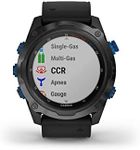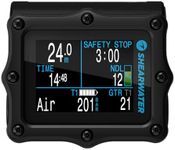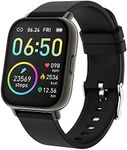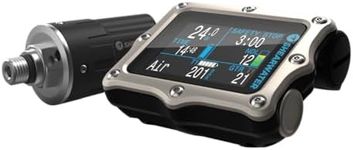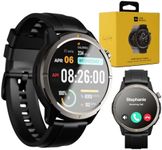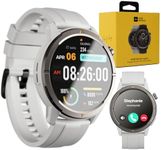Buying Guide for the Best Dive Computers
Choosing the right dive computer is crucial for ensuring safety and enhancing your diving experience. A dive computer helps you track your dive time, depth, and decompression status, allowing you to dive safely and efficiently. When selecting a dive computer, consider your diving style, experience level, and the type of diving you plan to do. Understanding the key specifications will help you make an informed decision that suits your needs.Display TypeThe display type of a dive computer determines how information is presented to you underwater. There are mainly two types: LCD and OLED. LCD displays are more common and generally easier to read in bright conditions, while OLED displays offer better contrast and are easier to read in low light. If you often dive in murky waters or at night, an OLED display might be more beneficial. Consider your typical diving conditions when choosing the display type.
Air IntegrationAir integration allows a dive computer to monitor your tank's air pressure and calculate your remaining air time. This feature is important for divers who want to keep track of their air supply without having to check a separate gauge. There are two types: hose-integrated and wireless. Hose-integrated models are connected directly to your tank, while wireless models use a transmitter. If you prefer a streamlined setup, a wireless model might be more suitable. Consider how important air monitoring is to your diving style.
AlgorithmThe algorithm in a dive computer calculates your no-decompression limits and ascent rates. Different computers use different algorithms, which can affect how conservative or liberal your dive limits are. More conservative algorithms are safer but may limit your dive time, while liberal ones allow for longer dives but with increased risk. If you're a beginner or prefer safer dives, opt for a more conservative algorithm. Experienced divers might prefer a more liberal algorithm for extended dive times.
User InterfaceThe user interface of a dive computer affects how easily you can navigate its features and settings. Some models have simple button controls, while others use touchscreens. A straightforward interface is crucial for making quick adjustments underwater. If you prefer simplicity, look for models with fewer buttons and intuitive menus. For tech-savvy divers, a touchscreen might offer more flexibility. Consider how comfortable you are with technology when choosing the user interface.
Battery TypeThe battery type in a dive computer determines how long it can operate before needing a recharge or replacement. There are rechargeable batteries and replaceable ones. Rechargeable batteries are convenient and environmentally friendly, but you need to remember to charge them before dives. Replaceable batteries can be swapped out quickly, which is useful for long trips without charging facilities. Consider your diving habits and how often you dive when deciding on the battery type.
Size and WeightThe size and weight of a dive computer affect its comfort and portability. Larger models often have bigger displays, which can be easier to read, but they may be bulkier on your wrist. Smaller models are more compact and lightweight, making them ideal for travel. If you prioritize readability and don't mind a larger device, a bigger model might be suitable. For those who travel frequently or prefer a minimalist setup, a smaller, lighter model is preferable.
